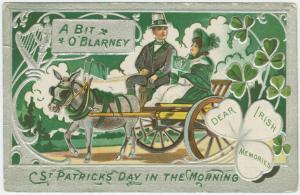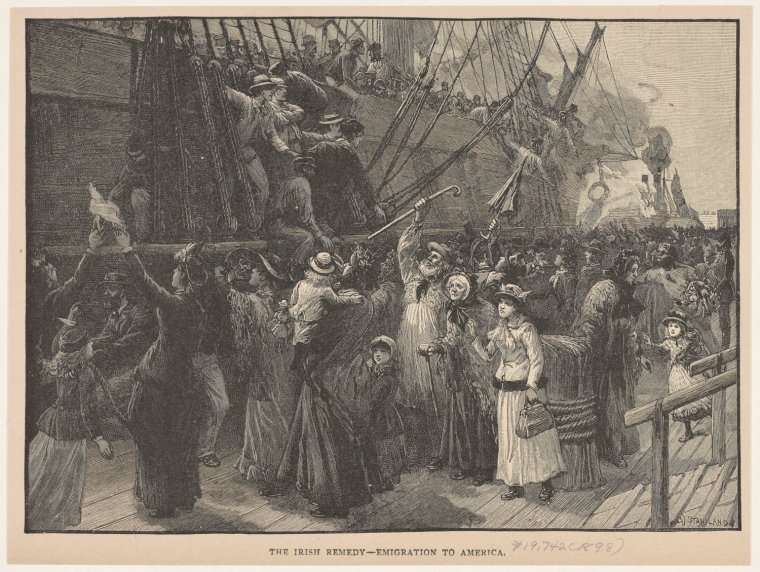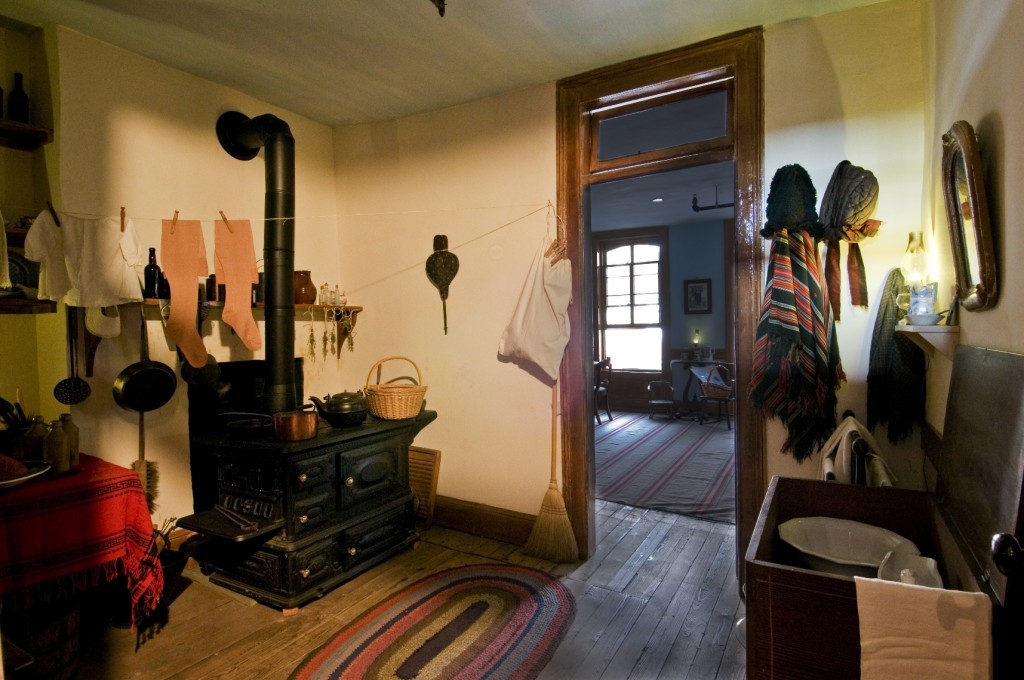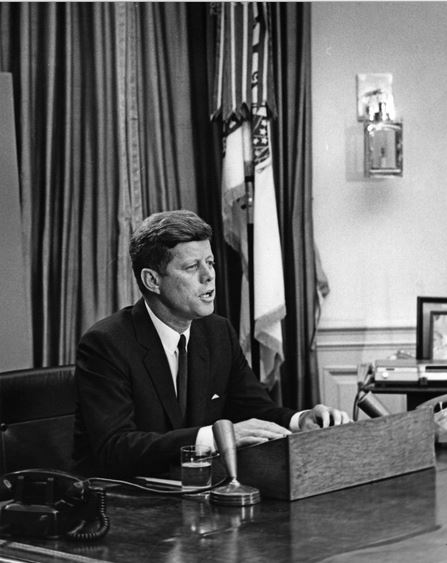Blog Archive
Luck of the Irish: Not Always a Good Thing

A St. Patrick's Day greeting card from the early 20th century. Courtesy of the New York Public Library.
Though it is forgotten annually by legions of young people celebrating in green,there was a time when Irish immigrants were once a group despised and derided upon their arrival to the United States. Unlike some chapters in the history of U.S. immigration, the story of Irish discrimination is both more complicated – and actually simpler – than it first appears.
What can prompt a nation to discriminate against a group of people who look more or less like they do? Who speak mostly the same language and read the same alphabet? The answer is, in part, religion and in part circumstance. The story of the Irish in the United States is actually two stories. The Irish had actually been immigrating to the United States since the 18th century from Ulster County – what is now Northern Ireland. This population was much more likely to be protestant and reached a New York with which their community had long traded wool and linen. These emigrants were leaving a country complicated by the struggles of colonialism and a fading linen trade. However, this was nothing compared to the poverty and starvation that would face their Catholic countrymen who were to come. The first wave of Protestant immigrants were more likely to be middle class and become part of an upwardly mobile middle class fairly soon upon reaching the U.S.

Irish citizens departing for what they hoped would be better opportunities in the United States. Etching from 1989 courtesy of the NYPL.
The largest influx of Irish immigrants arriving in the United States occurred around the Irish Potato Famine beginning in 1845. The Famine resulted from repeated waves of blight which struck potato crops across the country. The rural poor had especially relied on potatoes as their main source of food. It is estimated that around a million and a half people died of famine related causes in Ireland. Part of this famine is thought to have been fueled by unfair colonial rule and regulations. Immigrants from Ireland between 1846 and 1855 were part of the largest immigration of the 19th century. Immigration to the United State was another harrowing event. Desperate travelers crowded into steerage class cabins on ships where germs swept through this already weakened population. Another 9% of travelers would die on board these ships.

The interior of the Moore apartment. This apartment has been carefully restored the the condition it would have been in when the Moore family lived at 97 Orchard in 1869.
Visitors to the Tenement Museum going on the Irish Outsiders tour can walk into the home of the Moores, an Irish family who lived at the 97 Orchard Street around 1869. The Lower East Side was a diverse neighborhood even then. The Moores were an English-speaking, Catholic family, who lived in a building mostly of German-speakers. Their neighbors would be of all nations and denominations of religion. Some of the German immigrants who were considered much more reliable laborers would have been Catholic as well as Jewish. So why did Irish immigrants face such discrimination in job searches and from employers? The differences in their religious practices may have gotten swept up in the desperation of their poverty and in the sudden increase in their numbers. A common refrain Irish applicant faced in their job searches was “no Irish need apply.” No strangers to hardship, the Irish poor in New York were able to use song and music to create support in their community. Songs were created to bemoan and satirize the difficulties of discrimination and the public health dangers they encountered when living in the slums of New York.

President John Fitzgerald Kennedy. Of Irish descent, Kennedy was the first Catholic President of the United States. Photo courtesy of the Kennedy Library. Photo credit Rowe, Abbie.
The Irish Catholics only marked the beginning of a range of immigrants with whom Americans found fault ( but that is another story). Anti-Catholic sentiment was slow to fade. In 1960, then Presidential candidate John F. Kennedy addressed the swirling controversy about the influence of his faith on his actions and ideas. Even as late as 1960, voters feared that he would be taking direction from the Vatican. Kennedy won the Presidential election and became an American icon. So as you curse the drunken revelers on your street this St. Patrick’s Day, think instead of the shouting and tiny green hats as an example of a nation’s ability to overcome discrimination.
–Posted by Julia Berick, Marketing and Communications Coordinator